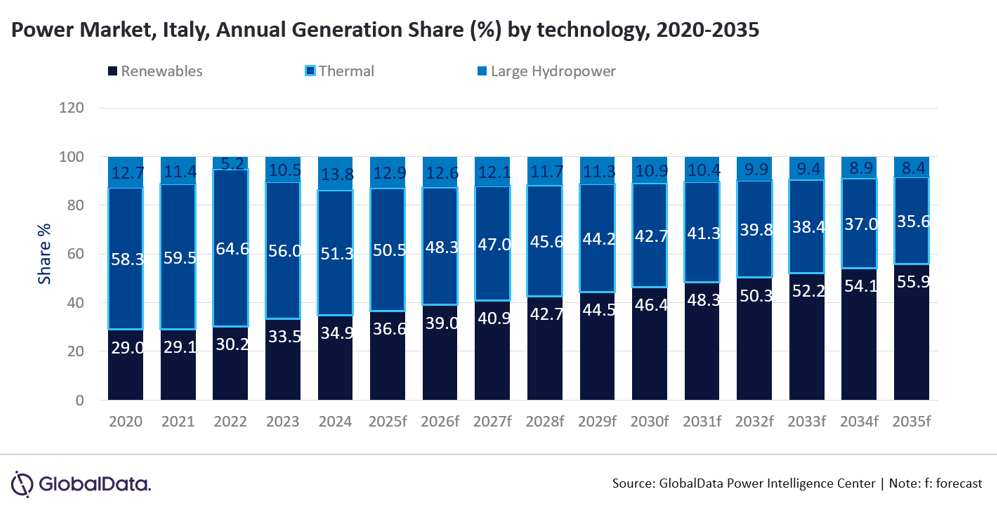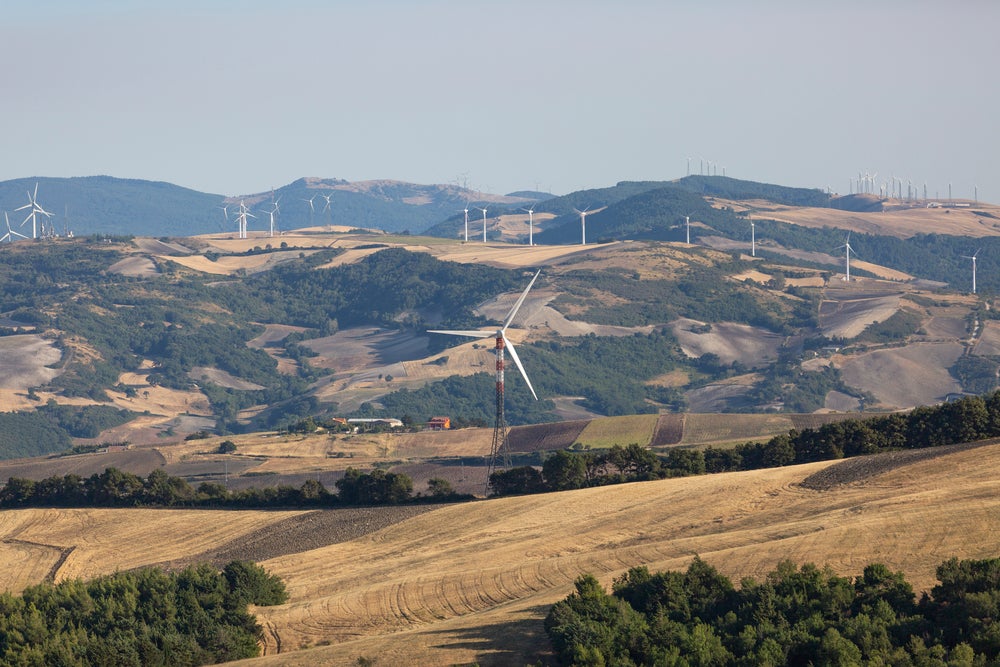Italy has been promoting the development of renewable energy through its principal energy strategies and policies, including the National Energy Strategy and the Integrated National Plan for Energy and Climate, while also emphasising energy security. As a result, renewables are projected to overtake thermal power as the primary source of Italy’s electricity generation in 2030 and will continue to increase their share to 55.9% in 2035.
Renewable power dominated Italy’s capacity mix in 2024 with a 43.4% share. It is expected to be the leading technology in 2035, accounting for a 70.6% share. This was closely followed by thermal power, which accounted for a 42.3% capacity share in 2024 and is expected to see a decline to 21.4% in 2035. In 2024, thermal power dominated the generation mix with 51.3%, while renewables accounted for 34.9% and large hydropower for the remaining 13.8% share.

Access deeper industry intelligence
Experience unmatched clarity with a single platform that combines unique data, AI, and human expertise.
Italy is not known for possessing substantial domestic fossil fuel reserves and is heavily dependent on imports. As the second-largest importer of gas in Europe, after Germany, the country sources natural gas from Azerbaijan, Algeria, Libya and other nations. Italy meets most of its gas requirements through imports, which may offer a short-term solution. However, the government is actively seeking to expand renewable energy capacity to reduce reliance on foreign sources.
Italy is poised to invest in two primary sectors: solar and wind power generation. Driven by its substantial potential and environmental objectives, the government has resolved to elevate the proportion of renewable energy in its total energy consumption to 40% by 2030.

Italy is aiming to achieve a 40% renewable share in gross final consumption and 65% renewable electricity generation by 2030, when the country also has a target of 27% of its power capacity from renewables. It aims to increase its total renewable installed capacity to 93.2GW and 186.8 terawatt hours (TWh) of power generation through renewables by 2030. It targets 50GW of solar photovoltaic (PV) capacity, 74TWh power generation through solar PV, and 18.2GW of wind capacity by 2030.
A primary force shaping Italy’s power market is its dedication to climate objectives, both at the national level and as a member of the European Union (EU). Italy is obligated to adhere to the EU’s Fit for 55 package and the European Green Deal, which collectively seek to reduce greenhouse gas emissions by at least 55% by 2030 and to achieve net-zero emissions by 2050.

US Tariffs are shifting - will you react or anticipate?
Don’t let policy changes catch you off guard. Stay proactive with real-time data and expert analysis.
By GlobalDataThese ambitious targets have compelled Italy to expedite the decarbonisation of its electricity sector, transitioning from fossil fuel-based power generation to renewable energy sources, including solar, wind and hydropower. The national strategy places a significant emphasis on the electrification of end-use sectors — transportation, heating and industry — which is anticipated to markedly increase electricity demand. This ongoing transformation is guiding investment decisions, grid modernisation and infrastructure planning throughout the power market.
The landscape of Italy’s power sector has undergone significant changes over the past few decades, and the nation is anticipated to transition to a green energy-based economy in the foreseeable future. Nevertheless, it faces several obstacles that need to be addressed. The primary challenge within the power sector is the country’s heavy reliance on energy imports, particularly from France and Switzerland.



